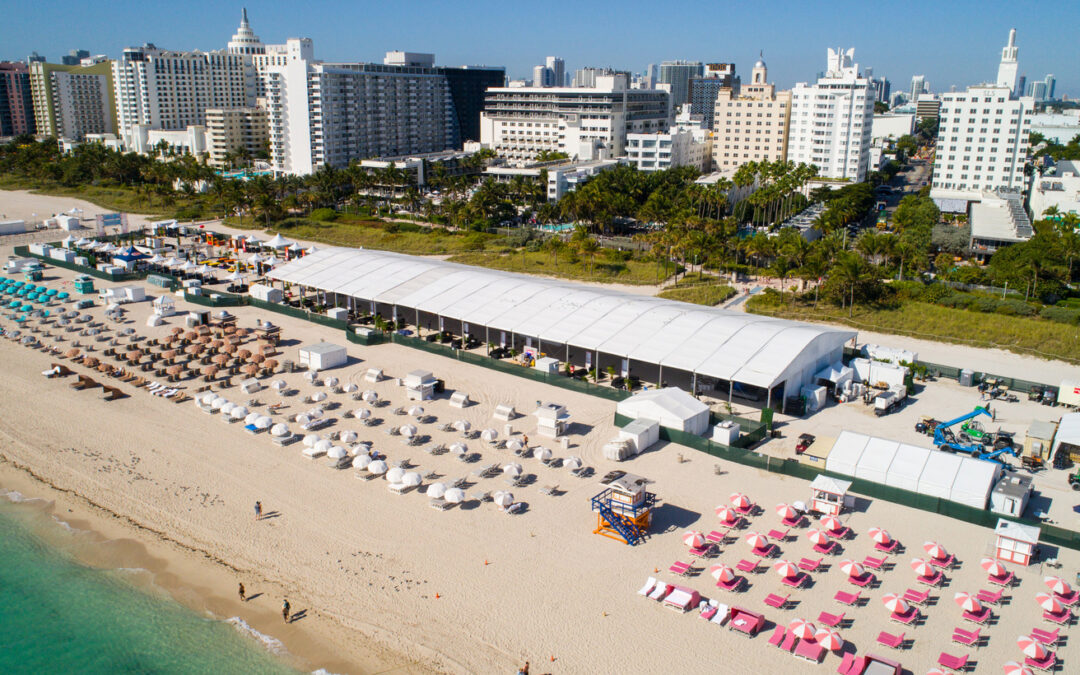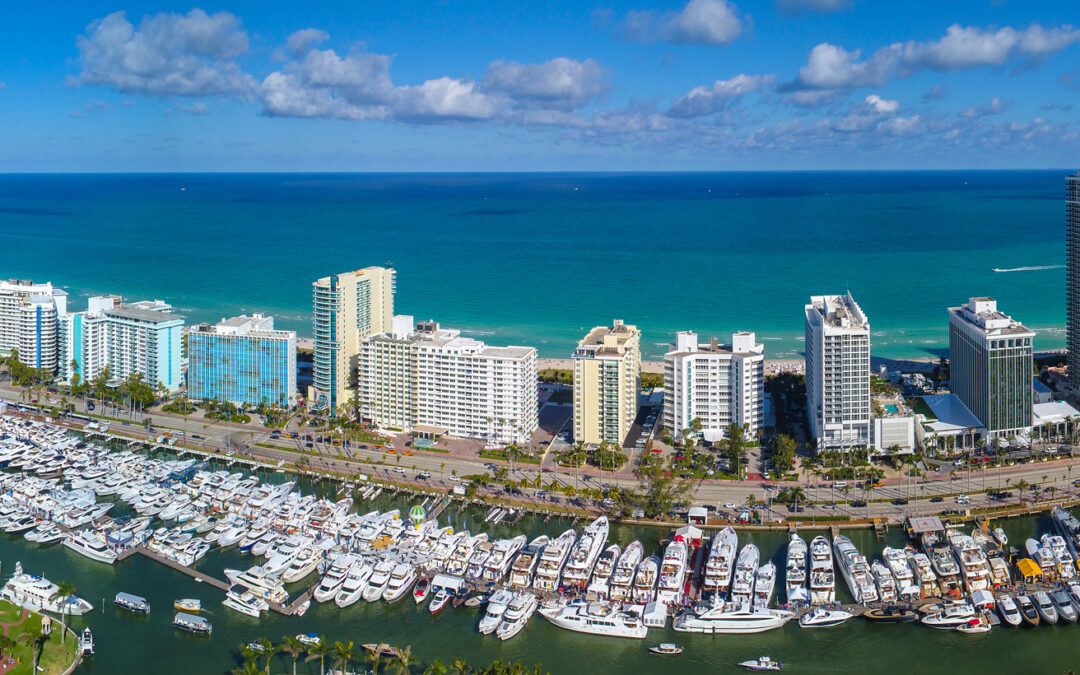
by cavalierhotdev | Apr,Mon,2023 | Miami Beach Events
April 1 to October 31, 2023
Every year, our beaches become a nesting ground for Loggerhead, Green Turtle, and Leatherback sea turtles. These magnificent creatures are protected by state law, emphasizing the importance of our collective efforts as a community to assist our marine friends. In Miami Beach, sea turtle season commences earlier to accommodate the nesting period of Leatherbacks, requiring our special attention.
To ensure the well-being of these remarkable sea turtles, please keep the following tips in mind during the nesting season:
- Refrain from approaching turtles as they emerge from the sea, and avoid disturbing or harassing nesting turtles.
- Respect the marked sea turtle nests on the beach and maintain a safe distance from them.
- During the night, close curtains or blinds to prevent interior lights from illuminating the beach, as this can disorient hatchlings.
- If you have bright lights facing the beach, either cover, shield, or dim them to minimize any potential disturbances.
- Spread the word among your friends and neighbors, informing them about the arrival of sea turtle season and the need to protect these incredible creatures.
We encourage you to visit our sea turtle education page, where you can learn more about how you can contribute to the conservation of sea turtles and their hatchlings this season!
Have a memorable visit by staying at the Cavalier’s South Beach Art Deco hotel that is located on Ocean Drive in front of the beach.For reservations call (305) 673 1199.

by cavalierhotdev | Mar,Fri,2023 | Miami Beach Events
Mark your calendars for March 24-26, 2023, as the world’s most prominent electronic music celebration, Ultra Music Festival, makes its triumphant return to its rightful home at Bayfront Park.
What initially started as a modest beach concert over two decades ago has evolved into a grand-scale musical extravaganza, attracting the biggest names in the electronic music scene to the stunning shores of Biscayne Bay.
Set against the dazzling backdrop of Downtown Miami, Ultra has become a platform for DJs and producers to showcase their talent, where attendees can witness electrifying performances of chart-topping hits by renowned artists, often experiencing them live for the very first time.
Don’t miss out on Ultra Music Festival Miami 2023 at the Bayfront Park Amphitheater in beautiful South Florida on March 24, 25, and 26. The FPL Solar Amphitheater at Bayfront Park will be abuzz with the exhilarating beats of Miami’s Ultra Music Fest. Tickets are currently available for purchase, and there may be options for upgrades and packages such as VIP, Reserved, Silver, and Gold Fan experiences. To secure premium seating options and check availability, please refer to the ticket links provided.
Have a memorable visit by staying at the Cavalier’s South Beach Art Deco hotel that is located on Ocean Drive in front of the beach.For reservations call (305) 673 1199.

by cavalierhotdev | Mar,Wed,2023 | Miami Beach Places
Discover Jungle Island, a beloved South Florida landmark nestled in the heart of Miami, perfectly positioned between downtown Miami and South Beach. This intimate zoological park, with its rich tradition dating back to 1936, is a sanctuary for some of the world’s rarest and most exotic animals.
Immerse yourself in the enchanting ambiance of Jungle Island, where guests are treated to captivating animal shows and enlightening exhibits. Wander through lush canopies of tropical trees, serenaded by the gentle sounds of streams and waterfalls. Choose your adventure, as you engage in hands-on interactions. You will see fascinating creatures or embark on exclusive behind-the-scenes VIP tours.
The essence of adventure
Jungle island is the essence of adventure, animals, discovery, and play intertwine. We offer visitors immersive and authentic jungle experiences. Let your curiosity guide you as you explore this remarkable park and forge unforgettable connections with the natural world. Moreover, Jungle Island goes beyond its enchanting wildlife to provide extraordinary event spaces, including the newly renovated Treetop Ballroom and picturesque outdoor areas, such as a private beach. It has become Miami’s go-to destination for exceptional occasions.
Originally known as Parrot Jungle, the park was established in 1936 by Franz Scherr, envisioning a place where birds could soar freely. Located in south Miami at the time, Parrot Jungle delighted visitors with its stunning collection of exotic birds. A few of these include Pinky, the high-wire bicycle riding cockatoo, and the world-renowned pink flamingos. They graced the opening credits of the iconic television series Miami Vice.
It’s Evolution
Additionally the park spurred the decision to rebrand as Jungle Island, aptly reflecting its diverse collection of animals, plants, and activities. From rare cycads to the extraordinary African sausage tree, Jungle Island boasts an array of unique flora. Meander along the covered trails spanning 1.35 miles, marveling at the captivating exhibits, special attractions, and immersive tours. Jungle Island continues to captivate the hearts of thousands of visitors who flock to the city each year. Moreover, Jungle Island offers an array of activities to delight its guests. Embark on a thrilling treetop tracking adventure, engage in awe-inspiring Animal Encounters, relax and unwind at the beautiful Joia Beach, Lounge, and Restaurant, or simply revel in the serenity of the Gardens. Additionally, Jungle Island serves as an exquisite venue for events and weddings, ensuring that every occasion is truly extraordinary.
Have a memorable visit by staying at the Cavalier’s South Beach Art Deco hotel that is located on Ocean Drive in front of the beach.For reservations call (305) 673 1199.

by cavalierhotdev | Feb,Wed,2023 | Miami Beach Events
Celebrating 22 years of Eat, Drink, Educate.
Join us in the heart of South Beach every February for an unforgettable culinary journey at the Wine and Food Festival. Get ready to savor exquisite flavors, sip on fine wines. Mingle with renowned chefs and food enthusiasts from around the world. Our four-day extravaganza promises a feast for the senses. Featuring an array of delectable dishes and top-notch beverages. Whether you’re a seasoned epicurean or simply looking for a unique and indulgent experience, this festival is the perfect opportunity to delight your palate. Don’t miss your chance to be a part of this gastronomic celebration in one of the most vibrant and beautiful settings. Book your tickets now and let South Beach’s culinary magic captivate you!
Supporting Students of the FIU
We proudly announce that our Wine and Food Festival is hosted by the world’s leading distributor of beverage alcohol. This event aims to support hospitality students at Florida International University. Prepare for an extraordinary experience at the Food Network South Beach, presented by Capital One (SOBEWFF®). This four-day extravaganza draws renowned producers, particularly from the alcohol and spirits industry, along with chefs and culinary personalities. It’s an unrivaled destination event showcasing their exceptional talents.
Supporting a Noble Cause
the Wine and Food Festival isn’t just about gastronomy and libations. All net proceeds benefit the Chaplin School of Hospitality & Tourism Management at Florida International University (FIU).
Southern Glazer’s Wine & Spirits and FIU jointly bring you the Wine and Food Festival. Their shared mission is to support FIU’s Chaplin School of Hospitality & Tourism Management and the Southern Wine & Spirits Beverage Management Center. This collaboration offers over 1,200 students and volunteers invaluable real-world experience, making the Festival an interactive educational platform that benefits future hospitality industry leaders. To date, we’ve raised an impressive $34 million for the School.
To learn more about the festival’s walk-around tastings and how to secure your tickets, please visit our website. We offer various ways for you to immerse yourself in this extraordinary event and enjoy all it has to offer.
Have a memorable visit by staying at the Cavalier’s South Beach Art Deco hotel that is located on Ocean Drive in front of the beach.For reservations call (305) 673 1199.

by cavalierhotdev | Feb,Wed,2023 | Miami Beach Events
Experience the ultimate boater’s paradise at The Miami Boat Show on February 15-19, 2023, at Pride Park Outside the Miami Beach Convention Center. Immerse yourself in The Miami Boat Show Experience, discovering interactive activities and educational seminars for all ages. Enjoy family-friendly activity zones. Indulge in world-class food and daily entertainment. Access is included with general admission, providing a comprehensive outing.
A highlight is the Nautical Ventures AquaZone, a 60′ x 30′ aquatic area with a 40,000-gallon freshwater pool. Witness captivating demonstrations, engage in hands-on testing, and enjoy water sports and marine products. Don’t miss this extraordinary event!
The ultimate Paradise
For those seeking knowledge and practical skills, don’t miss the Fred’s Shed Interactive Learning Center. Besides, this hub of expertise provides an opportunity to address any boat or engine issues you may be facing. Visit Fred’s Shed How-To Center and consult with our tech expert. They offer free tips, advice, and valuable insights during daily seminars and demos. Gain essential knowledge on topics ranging from boat operation and maintenance to troubleshooting and more. Let us guide you towards a seamless boating experience.
Enthusiastic anglers will find the Fishing Seminars to be an absolute delight. Engage in interactive presentations and activations that unfold throughout the show. Captain Don Dingman, the driving force behind Hook the Future’s Kids Fishing Clinics, will captivate audiences as he demonstrates various fishing techniques and showcases a wide variety of fish species. Every participant will receive a complimentary Hook the Future/Carolina Skiff custom rod and reel combo, ensuring they can start their fishing adventures on the right foot.
Click on the following link for all you need to know about the Miami Boat Show and how to purchase your tickets on time! Have a memorable visit by staying at the Cavalier’s South Beach Art Deco hotel that is located on Ocean Drive in front of the beach.For reservations call (305) 673 1199.





